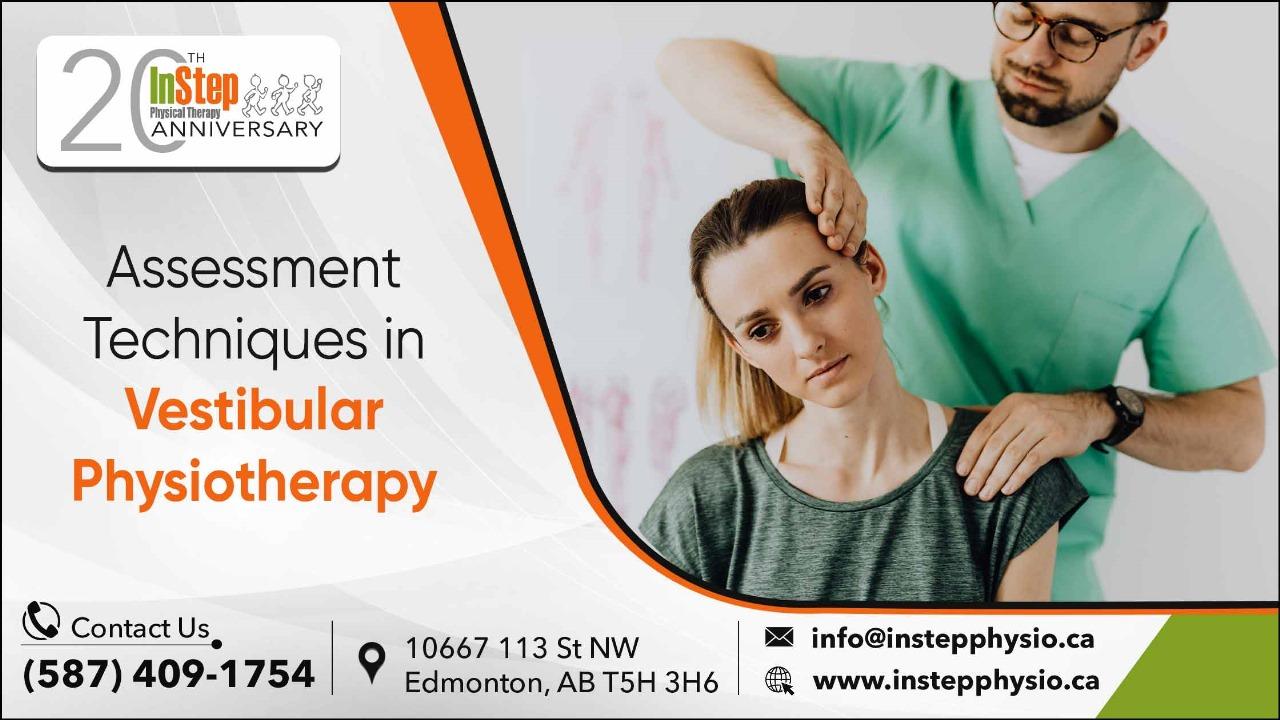Vestibular physiotherapy is a specialized branch of physical therapy that addresses issues related to the inner ear and its role in balance and spatial orientation. Common conditions treated include vertigo, dizziness, and balance disorders. These issues can have a profound effect on an individual's quality of life, leading to physical discomfort, difficulty in performing daily activities, and even anxiety or depression. Thankfully, with the advent of vestibular physiotherapy in centers like In Step Physiotherapy Edmonton, there's hope for relief and recovery.
The Importance of Accurate Assessment
Before any effective treatment can commence, it's crucial to pinpoint the root cause of a patient's symptoms. The broad range of symptoms, which can include everything from dizziness to balance problems, means that a thorough assessment is paramount to successful treatment. An accurate assessment in vestibular physiotherapy Edmonton ensures tailored therapy, reducing the trial-and-error approach.
Key Assessment Techniques in Vestibular Physiotherapy
- Subjective Examination: Here, the therapist gathers a comprehensive history of the patient. This includes understanding the onset of symptoms, triggers, associated symptoms like nausea, and how these symptoms impact daily life.
- Oculomotor Examination: Evaluates the function of the eyes and their movement. This test checks for issues like nystagmus (involuntary eye movement) and seeks to determine if the dizziness is because of an inner ear problem(vestibular) or something else.
- Positional Testing: This includes the Dix-Hallpike maneuver, used to diagnose benign paroxysmal positional vertigo (BPPV). The patient's head is moved into specific positions to check for dizziness or the characteristic eye movements of BPPV.
- Dynamic Visual Acuity Test: This test examines how well a person can see while moving, helping to identify vestibular issues that affect vision during activities like walking.
- Balance Assessment: Evaluates the patient's ability to maintain balance in different scenarios, including varying surfaces or with eyes closed.
- Gait Analysis: Examines a patient's walking pattern to determine if dizziness or balance issues affect movement.
- Functional Gait and Balance Tests: These can include the timed "Up & Go" test or Dynamic Gait Index, which gauges the patient's risk of falling or their ability to adapt to changes in the environment.
- Video Nystagmography (VNG): This test uses video goggles to monitor eye movements, tracking involuntary movements and providing data on inner ear function.
- Computerized Dynamic Posturography: By standing on a moving platform with varying visual conditions, this test assesses a patient's balance and postural reactions.
- Cervical Vestibular Evoked Myogenic Potential (cVEMP) Testing: Assesses the saccule, a part of the inner ear, and the inferior vestibular nerve by measuring the reflex arc between them and the neck muscles.
- Audiometric Testing: While primarily for hearing, any abnormalities might provide additional information about the inner ear, which plays a pivotal role in balance.
The Interrelation Between Vertigo, Dizziness, and Vestibular Disorders
When people speak of feeling unsteady or having "spinning sensations," they often use the terms "dizziness" and "vertigo" interchangeably. However, in the realm of vestibular physiotherapy, distinctions between these sensations are critical.
- Vertigo: This is a specific type of dizziness characterized by the sensation that either you are moving or spinning or that the world around you is moving or spinning. It's commonly associated with vestibular disorders, such as benign paroxysmal positional vertigo (BPPV).
- Dizziness: A broader term, dizziness can encompass a range of sensations from lightheadedness to unsteadiness. It can originate from various causes, not limited to vestibular issues.
Home-Based Assessment Tips
For those grappling with dizziness or vertigo, understanding and monitoring symptoms can be empowering. It also aids physiotherapists in tailoring treatments. Here are some home-based assessment tips for patients:
- Symptom Diary: Maintain a daily log of when dizziness or vertigo episodes occur, their duration, and any potential triggers.
- Positional Testing: With guidance from their vertigo physiotherapy Edmonton, patients can learn simple maneuvers to test for BPPV at home, such as the Dix-Hallpike test. Note: This should be done safely, preferably with someone present.
- Balance Checks: Regularly test and monitor balance. Standing on one foot or walking heel-to-toe are simple ways to gauge balance. Any changes can be indicative of progression or improvement.
- Eye Movements: Some vestibular issues can cause disruptions in eye movements. Tracking a slow-moving object with the eyes can help in identifying anomalies.
- Stay Informed: Equip yourself with knowledge. Understanding vestibular disorders and their symptoms can help in differentiating between them and other potential issues.
- Feedback Loop: Regularly communicate findings with your vestibular physiotherapist. The insights gained from home assessments can be invaluable when integrated with professional treatments.
Drawing Parallels and Charting Pathways: The Multifaceted Role of Vestibular Physiotherapy Assessments
Dizziness, vertigo, and balance issues can be debilitating, but they don't have to dictate the quality of one's life. With the right assessment techniques, patients can receive targeted therapy to address their unique challenges. Vestibular physiotherapy, especially from esteemed centers like In Step Physiotherapy Edmonton, offers a beacon of hope for those seeking to regain their equilibrium and live life to the fullest.
Also read about:
Which Mattress To Buy For Best Comfort
Best Furniture Shop in UAE
Best Business Contract Lawyer in US

